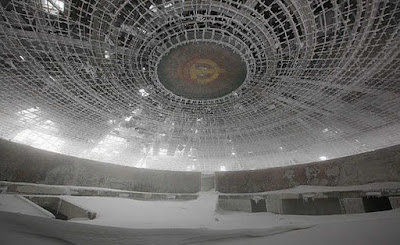(image∣Timothy
Allen)
The work examines progress without retrogression.
It is dark with hints of romanticism, inert yet stimulating. There is plenty of
otherworldliness but familiar icons are abound.
(image∣www.darbiansphotography.com)
Goya's luster might shine on Lavier's
car installation here, but minus the stunt. The whole scene throws perplexing questions
to the mind, rather than light so to say. Undisclosed in the film, it is a mysterious
car grave, manifested itself in an abandoned mine in Gwynedd, Wales
(image∣www.nj.com)
Among others, the waterlogged imagery is equally
indelible. If Ansel Adams were to celebrate nature, Geyrhalter would question
our relationship with it. Hurricane Sandy
(image∣www.where-is-this.com)
At times, sounds of buzzing insects or flapping birds flurried between the ears make a lasting impression. Thanks to the 5.1 sound effects and admitted by the director as audio mixing, they captivate the audience more effectively than roaring thunders.
(image∣Chris
Luckhardt@flickr)
The 94 minutes of shootings, tells forbidden
stories without words or music. The interiors of dwellings on Hashima Island
(commonly known as Battleship
Island
'Homo Sapiens' is a
film only in format, documentary for the convenience of classification. It is disquietingly
art-house, so much so that it does not have a dialogue but still requires an
admission ticket.
'Homo Sapiens' - an official clip
'Homo Sapiens' by Nikolaus Geyrhalter, was part of
the collection of films shown during the Hong Kong International Film Festival
(HKIFF) in April, 2016.
Note: The stills above are selected from the internet
due to the lack of official materials from the film. Credits as shown above.







No comments:
Post a Comment